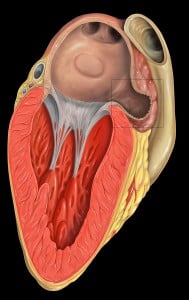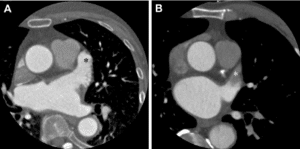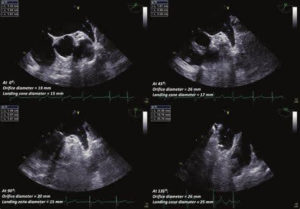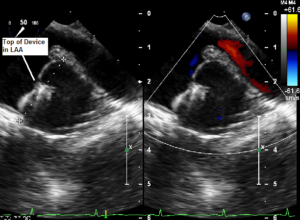Why Choose Dr. Iqbal Malik at London Cardiovascular Clinic?
When making a health decision, it is important to choose the right healthcare provider. We offer exceptional care and expertise for Left Atrial Appendage closure at London Cardiovascular Clinic, a leading private healthcare provider in the UK.
Here’s what makes London Cardiovascular Clinic the preferred choice for a private LAA closure in the UK:
- Recognised Expertise: Our highly skilled cardiologists, cardiac surgeons, and nurses specialise in closure procedures. Coordinated by Dr. Iqbal Malik, a leading Consultant Cardiologist, our experts bring extensive experience and a patient-centred approach to ensure the best possible outcomes. Dr. Malik is a recognised expert in LAA Closure, frequently lecturing on the topic globally.
- Personalised Care: We understand that every patient is unique. Our dedicated team takes the time to thoroughly evaluate your condition and tailor the treatment plan to your individual needs. From the initial consultation to post-operative care, we’ll be with you every step of the way.
- Comfortable and Convenient Experience: Your well-being is our top priority. Our clinic provides a relaxed and welcoming environment, making your stay as pleasant as possible. We also offer flexible appointment times. We meet your needs to make the experience less stressful.
Do I Need LAA Closure?
Atrial fibrillation (AF) is a significant risk factor for stroke due to the potential formation of blood clots. These clots often form in the left atrial appendage (LAA), an area of the heart where blood flow can slow down. The LAA, similar to the appendix in the abdomen, has an uncertain function but is a common site for clot formation in AF patients.
Left Atrial Appendage Closure might be recommended as an alternative to blood thinners if you have:
- Atrial Fibrillation: Increasing your risk of stroke.
- Complications from Blood Thinners: Such as bleeding, making anticoagulant therapy unsuitable.
- Especially if you have a history of Stroke or Transient Ischaemic Attack (TIA): This increases your risk of further strokes
Traditionally, Warfarin therapy has been used to reduce the risk of stroke in AF patients by preventing clot formation. Now, Direct or New Oral anticoagulants, DOAC or NOAC drugs, are in common use. However, for those who have experienced issues with anticoagulants, treatments like Left Atrial Appendage Closure (LAAC) are better alternatives.
Below is an illustration of the heart where the Left Atrial Appendage is seen within the red box:
How to Prepare for a Left Atrial Appendage Closure at London Cardiovascular Clinic?
Getting Here
Dr. Malik primarily sees patients at One Welbeck Heart Health, 1 Welbeck St, London, W1G 0AR. Appointments at other locations can be arranged upon request.
Have questions or special needs? Make an enquiry today!
What Tests Will I Need Beforehand?
Before undergoing Left Atrial Appendage (LAA) Closure, several diagnostic tests are required to ensure the procedure is appropriate and safe for you. These tests help evaluate the size and shape of the left atrial appendage, as well as your overall heart health.
Below is a list of common tests you may need:
- CT Scan: A computed tomography scan helps visualise the heart and surrounding structures, helping to plan the procedure accurately. (the black asterisk shows a “clean LAA, and the white asterisk shows a clot in the LAA on CT)
- Transoesophageal Echocardiography (TOE): An internal ultrasound is performed via a probe inserted into the throat to obtain detailed images of the heart and left atrial appendage.
- Cardiac MRI: It uses a harmless dye to create an image of the heart to assess its structure and function.
These tests provide necessary information for Dr. Iqbal Malik about your left atrial appendage before performing the closure procedure.
Treatment
After reviewing the test results, Dr. Malik will provide individual instructions on how to prepare for your Left Atrial Appendage Closure. This may include dietary and/or medicinal adjustments.
Don’t hesitate to discuss any concerns or questions with the medical staff. They are dedicated to supporting you throughout your healthcare journey.
Below is an example of a Transoesophageal Echocardiogram (TOE) assessing the LAA in multiple directions:
What Happens During a LAA Closure?
The Left Atrial Appendage (LAA) Closure is a simple yet precise procedure that helps lower the risk of stroke by closing off a small part of the heart (“heart appendix”).
Here’s a clear step-by-step guide to what happens during the procedure:
- Anaesthesia: You will be given general anaesthesia to keep you asleep and pain-free throughout the procedure.
- Guiding the Procedure: The doctors use X-rays and an ultrasound probe in your throat to see inside your heart and guide their actions.
- Accessing the Heart: A catheter (thin tube) is inserted through a vein in your leg and carefully moved into position in your heart appendix (LAA), using the images from the X-rays and ultrasound to guide it. This means having to make a hole in the middle of the heart between the right atrium and the left atrium. A long needle is used to do this.
- Inserting the Device: A small wire is pushed through the catheter towards the left atrial appendage. A stiff tube is then placed over this wire, and a closure device is put in the right spot to seal the LAA.
- Sealing the LAA: The closure device is released to seal the LAA, stopping any potential for blood clots. Afterwards, the catheter and other tools are taken out, and the hole in your leg is pressed to stop any bleeding.
This procedure is designed to be straightforward and effective, helping to protect your health with minimal impact.
Below is an ultrasound of a Watchman LAA device positioned in place:
Book Your Consultation
Send us an e-mail or complete our simple contact form to arrange your consultation with London’s top cardiologist consultant, Dr. Iqbal Malik.
Left Atrial Appendage Closure Recovery: What to Expect
Recovering from a Left Atrial Appendage (LAA) Closure is generally straightforward. Here’s what you should expect during your recovery:
- Hospital Stay: Most patients can go home the day after the procedure. Initially, you’ll be monitored in the hospital for a few hours to ensure there are no immediate complications with your atrial appendage.
- Activity Restrictions: You’ll need to avoid driving for several days to a few weeks and should refrain from strenuous activities for about a week. Light activities, like walking, are encouraged to aid in your recovery.
- Medications: You may be prescribed blood thiners to help prevent blood clots from forming, even if you are not on them long-term.
Regular follow-up visits are essential to monitor your heart health and the effectiveness of the atrial appendage procedure.
How Much Does LAA Closure Cost in the UK?
Insurance
Most private medical insurance policies cover the cost of a Left Atrial Appendage Closure. To speed things up, contact your insurance company before your appointment. Get a pre-authorisation code. This will help you understand the specifics of what your policy covers and any potential out-of-pocket expenses.
Self-Funding
If you are self-funding your procedure, a detailed price list is available upon request and displayed in our waiting area. For a cost estimate, including the price of a private Left Atrial Appendage Closure, contact our office. We can provide comprehensive information and answer any questions you may have about the financial aspects of your treatment.
Frequently Asked Questions
What Are The Risks of LAA Closure?
While Left Atrial Appendage (LAA) Closure is generally safe, there are some risks to consider:
- Device Detachment: Issues may include incorrect positioning of the device, incomplete closure of the LAA, or the device becoming dislodged.
- Internal Bleeding: Pericardial effusion (internal bleeding around the heart) is a possible complication.
- External bleeding and Infection at the catheter insertion site is also a risk, though steps will be taken to minimise this.
- Other Risks: There is a small chance of damage to heart structures, irregular heartbeat (arrhythmia), or allergic reactions to the device or medications.
Bruising at the insertion site is common but typically resolves on its own.
Your doctor will review these risks with you before the procedure and answer any questions you may have.
What are the Benefits of LAA Closure?
The main benefit of Left Atrial Appendage Closure is that it greatly lowers the risk of stroke for patients with atrial fibrillation, especially those who can’t take long-term blood thinners. By closing off the LAA, the procedure helps prevent blood clots from forming, which reduces the chance of a stroke. It can also mean you won’t need to take daily anticoagulant medication for the rest of your life. This not only reduces the risks and side effects of these medications but also makes daily life simpler and more enjoyable for patients.
What are the Types of Left Atrial Appendage Closure Devices?
- Watchman Device: One of the most commonly used implants, designed to block the LAA.
- Amplatzer Amulet: Offers various sizes and features to accommodate different patient anatomies.
- Lariat Device: A surgical lasso-like approach that ties off the LAA from the outside.
- Omega: A softer device that forms a cup inside the LAA
- Lambre: with an anchor and lid to seal the LAA








